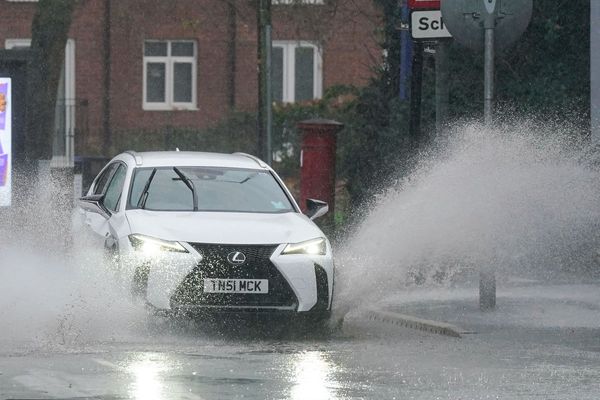
Photograph: Nick Upton/Alamy
On 7 May, I tweeted that swifts had appeared in the skies over the shed where I write on the same day in 2022, and predicted, if they kept to their schedule, they would leave overnight on 7 August. My excitement was short-lived. I’ve seen no more than three or four breeding pairs over the village of Blockley, Gloucestershire, whereas last year I estimated 16 to 20 pairs and an end of season exodus of between 50 and 60 birds.
My figures are hardly scientific, but they suggest a decline of between 75% and 85% on last year, an acceleration in an established trend that shows a loss of 60% of swift numbers since 1995.
Last year, I saw something miraculous when returning from a walk at dusk. The village swifts were gathered in a screaming mob. With each pass over the church and the green, they rose higher and higher. At length, I realised they were aiming for a wave of birds flying at great altitude. Binoculars confirmed hundreds of swifts heading south-west.
The disappearance of swifts from our skies is one of the saddest prospects of this epoch of casual extermination. At a minimum, we should recognise what’s happening, and understand that a creature that can fly 1m kilometres in its lifetime and takes our imaginations with its soaring flight is about to join other rare but once common species – the cuckoo, curlew, lapwing, sparrow, numerous migrating warblers, and even the starling.
It’s not as if there aren’t numerous swift groups around the country trying to support the bird with breeding boxes, and inserting swift bricks into walls. Yet these are useless without abundant supplies of insects, and that is where the crisis mostly lies. In the past 20 years, flying insects have declined in Britain by 60%. Worldwide, with current rates of decline, 33% of all insects are at risk of extinction.
I am haunted by a little pink notebook, containing the tiny drawings of my ancestor Anne Porter from 1800 onwards. Between the pages of her view of a watermill, from the 1820s, is a butterfly, perfectly preserved. It is a Scotch argus. This is the only one I have seen, for they are rare and almost gone in England. Between other pages are tiny thunderbugs, or thrips, which hatched in July in their billions but no longer trouble us today.
What haunts me is the unthreatened profusion of bugs in Anne’s lifetime compared with their scarcity today. Go out into the countryside, local park or waste land and you will see far fewer insects than five or 10 years ago. The bugs that smeared your windscreen are almost gone.
So, what do we do? We start by recognising what’s happening on our watch. We put up boxes. We allow our lawns to grow out until July and see wildflowers take hold. We stop using garden pesticides, felling trees and clearing insect habitat. We compel water companies to stop polluting. We form groups and interrogate local farmers about the pesticides they’re using. We show our children, maybe with a cheap magnifying glass, the wonder of a bronze beetle or a red soldier beetle crawling across the lace work of a hemlock flower. Nature is not something separate. It’s not a resource. It is us, our world. Concentrate!
• Henry Porter is a writer and journalist specialising in liberty and civil rights







